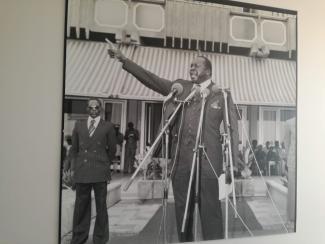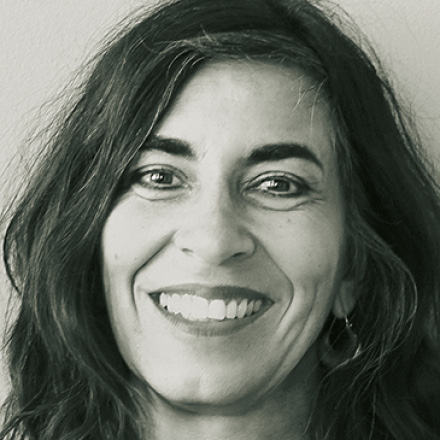Idi Amin photo exhibition
Facets of a despot

Widely known as the “butcher of Africa”, the dictator Idi Amin is considered the epitome of the brutal despot. During his eight years in power, from 1971 to 1979, he sent between 300,000 and 400,000 people to their deaths. He ordered innumerable foreigners, above all Indian traders, to be expropriated and expelled.
During his reign, Amin was escorted everywhere by a team of state photographers. Hundreds of thousands of pictures were taken – because the dictator understood the power of public presence. Until recently, those photographs were believed lost. But in 2015, archivists at the Ugandan state broadcaster discovered a hoard of thousands of images. Since then, experts from various universities have digitised 25,000 of the 70,000 negatives found. The 200 photos included in the Uganda National Museum’s exhibition “The Unseen Archive of Idi Amin” are only a small selection.
The exhibition is intended to show “different facets of Idi Amin’s personality”, explains visitor-support team member Anne Kakho. Amin’s term of office is presented in timelines. One shows official photographs: the dictator in front of Berlin’s Brandenburg Gate in 1972, meeting Libyan leader Muammar Gaddafi in 1973, and greeting Emperor Jean-Bédel Bokassa from the then Central African Empire shortly afterwards.The second timeline shows lots of pictures of everyday life in Uganda in the 1970s. An information panel flanking the display tells the visitor: “The seventies were a time of cultural creativity, a time of love, music and a new life.” Here it becomes clear how the dictator garnered support. He is seen as a musician playing an accordion, as a dancer at a cultural event and as a boxer in the ring.
The third timeline attempts to capture the horror of Amin’s rule: empty torture chambers, public executions and the deportation of Indian merchants. Another exhibition panel points out the paradoxical picture presented by “paralysing horror and a vibrant public life”.
The exhibition makes no attempt to appraise events. That is left entirely to the viewer. At the end of the museum visit, Ugandans are invited to leave their thoughts and feedback in writing. For the moment, the aim is to keep this a domestic dialogue.
The public response to the exhibition is generally very positive, even if the feedback is highly diverse, says Anne Kahko. “One family wanted us to take down the displays, saying they were an insult to the present government.” Some of Idi Amin’s children have also visited the exhibition and they loved it. His youngest son, Jaffar Amin, was even willing to contribute to the exhibition, offering more photos and lots of stories from the time. The organisers take note of everything. They now see this as just a beginning; they are planning a major exhibition in the future.
The way the images are presented reflects many Ugandans’ attitude towards Idi Amin. Very few see him exclusively as the brutal butcher he is perceived to be abroad. Visitor Irene Aikuru believes “he killed no more people than other presidents of this country, no more than the present president. He was just totally unsophisticated and did not conceal anything. He displayed his cruelty openly – that was the difference”.
The format of the exhibition, which allows visitors to see the side of Idi Amin that they wish to see, also says something about how little has been done in Uganda to deal with the past. There has been no reappraisal of the past, no public commemoration of war victims, no acknowledgement of the suffering endured by the civilian population. So this exhibition, with its focus on dialogue, is a ground-breaking event.
The exhibition ran until mid-February 2020 in Kampala and is scheduled to move on to many more venues.
Isabella Bauer is a freelance journalist and adviser specialised in East Africa, Southern Africa and Germany.
isabella.bauer@gmx.de










